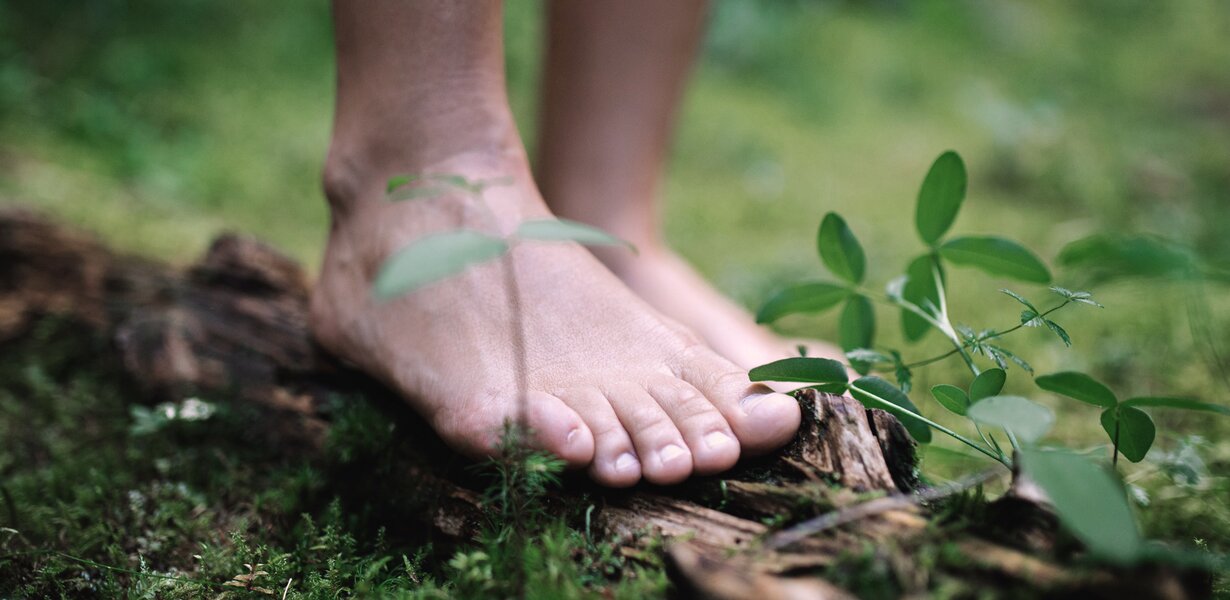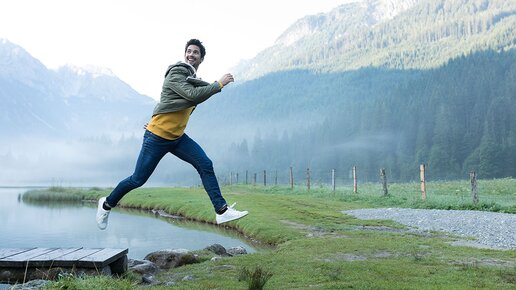A hint of moss, the rustling of leaves, fresh leaf green. If you long for peace and relaxation in your life, you can immerse yourself in the atmosphere of the forest. Bathing between woody plants is not only balm for body, soul and spirit, it also has an impressive effect on our body's own defence system. But where has the trend come from? And what does science have to say about it?
What is forest bathing and where does it come from?
Forest bathing. What sounds like esoteric humbug first off turns out to be a scientifically recognised form of health promotion when it is looked at more closely. At the origins of forest bathing there was a marketing campaign. In the early 1980s, the Japanese Ministry of Agriculture, Forestry and Fisheries tried to attract more and more former locals to the forests using the local marketing slogan “Shinrin Yoku” (freely translated: “take a bath in the forest atmosphere”).
From marketing gag to scientific discipline
Scientifically backed up by a research programme worth millions, the idea of forest bathing soon enjoyed unprecedented success. In the national recreation forest of Akasawa, for example, there are now around 5 million Japanese people who go there annually to wind down. At Japanese universities, “forest medicine” has become a unique scientific discipline and “Shinrin Yoku” is prescribed by many Japanese doctors for several days at a time.
Forest bathing in our own forests
More and more people in Europe are also getting a taste of forest air. After all, it is not only Japanese pines, larches and cedars that are healing, but also European spruce, pine and beech. Following in the footsteps of Japanese healthcare, the Immanuel Hospital Berlin now offers a forest bathing trail on the Wannsee in Berlin. Research on the health-promoting aspects of a forest stay is once again being carried out in Bavaria, where the Bavarian Spa Association (BHV) in cooperation with the Ludwig Maximilian University of Munich has launched the project “Forest and Health”.
The wonderful thing about Japanese natural therapy is that there is a lot of forest available in our latitudes – a treasure which is easy to reach and free of charge and which we should definitely use often.
Effect of forest bathing: The longing for coming home
But what makes forest bathing so healing for us humans? For many thousands of years, the surface of the earth was covered by significantly more forests than it is today. Our ancestors crossed the ancient forests, slept in the protection of the tree giants and lived off the flora and fauna on and around them. It is possible that a bit of genetic longing still lives in us today to dive into the forests and to put down our roots there for a while. At any rate, the evolutionary biologist Edward O. Wilson from Harvard University is convinced of this “biophilia”.
Forest bathing for the good of the soul
Anyone who allows the forest to penetrate all their senses – who inhales forest fragrances, perceives natural sounds and the play of light and shadow – activates the parasympathetic nervous system, the so-called resting nerve of the body: Respiratory and heart rate decrease, blood pressure decreases.
Studies show that even 20 to 30 minutes in nature are sufficient to reduce the level of the stress hormone cortisol. A research cooperation between the University of Exeter, the University of Queensland and the British Trust for Ornithology also found evidence that forest visitors assess themselves happier the more trees and bushes they see and the more birds they hear. Even the gentle splashing of a stream can brighten up your mood.
You can experience what the studies show in your own body. Under the protection of the tall plants, the stress and stresses of everyday life move into the background for at least a while. The refreshing effect does not unfold just at a mental level. Cells and organs also have time to regenerate.
Green regeneration
Colour psychologists rate the many green tones of the forest as calming and harmonising. Just the sight of a forest can lower the stress hormone level in the blood and increase well-being and mood. In addition, a study showed that the wounds of patients who can see trees healed faster, they needed fewer pain killers and could be discharged from hospital earlier.
There is something in the air
There is a very special atmosphere in a forest. While water evaporates on the leaves, the treetops reduce sunlight. This creates the typical “forest microclimate” with less light, more balanced temperatures, lower air movements and higher humidity. In addition, trees, shrubs and moss, as well as fungi and bacteria, exude thousands of chemical substances. These so-called “phytoncides” are used by plants for various purposes. They help them, for example, with pest control, cooling or communication with other plants.
Forest bathing armours defences
If you take a deep breath in a pine forest, you might feel a hint of very special phytoncide. The pungent terpenoids are considered to be particularly effective from a medical perspective and are particularly exuded by coniferous trees such as spruce, fir and pine. It is also thought that it is precisely these botanical fragrances that protect our immune defences with more protective cells: A study showed that one day in the forest increases the proportion of important natural killer cells by up to 40%. This effect lasts about a week. The effect even doubles over two days in the forest and it takes a whole month until the level drops again. According to the research team supporting the physician Qing Li, terpenoids in the brain also appear to produce certain messenger substances that have a favorable effect on blood sugar levels, blood pressure and stress hormones.
How does forest bathing work?
Those who submerge themselves in the forest with all their senses, who encounter it as a child in a playful way, are already bathing in the forest. What does the air smell like, what are the sounds of nature? Can I hear birds chirping, the babbling of the stream, the rustling of leaves? What do the herbs and fruits of the forest taste like? What does the forest floor feel like with bare feet, the damp leaves of the fern, the sticky tree resin? What types of trees are there in my magical spot? Can I see any insects and how many green nuances can I distinguish?
When it comes to forest bathing, it’s important to experience it rather than classify it – and to linger without hurrying. In this way everyone can enjoy the impressive healing power of the forest deliberately and with mindfulness.
So what are you waiting for? Get out of the house, submerge yourself in the power of nature and take a deep breath! The forest awaits.
References:
Hunter M. C. R. et al. 2019. Urban Nature Experiences Reduce Stress in the Context of Daily Life Based on Salivary Biomarkers. Front Psychol. 10:722.







